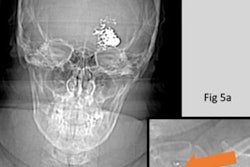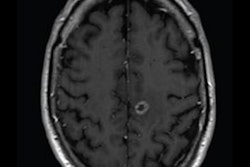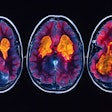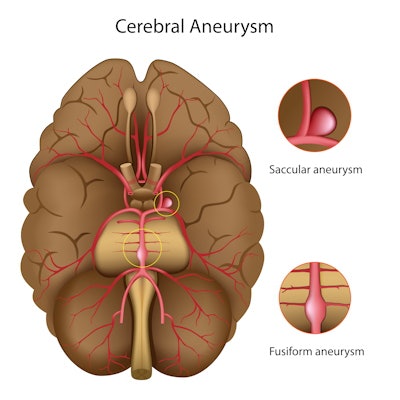
In daily practice, it's often not known which type of cerebral aneurysm clip was implanted in a patient, and ferromagnetic-type clips were used until the late 1990s. The Dutch Association of Medical Specialists (FMS) has now written a guideline for developing a local policy to safely perform MRI in these patients.
"Patients with an aneurysm clip implanted in a period when ferromagnetic types were still in use can present themselves for MRI for decades to come," reported Dr. Mark B.M. Hofman, from the department of radiology and nuclear medicine at Vrije Universiteit, Amsterdam UMC, the Netherlands, and colleagues at the International Society for Magnetic Resonance in Medicine (ISMRM) 2021 annual congress.
"In the past, patients have received clips that are an absolute contraindication for MRI, so caution is advised when the type of clip is unknown or it is not possible to determine with certainty what clip was implanted," they added, emphasizing the importance of having strategies for known and unknown clip types for 1.5- or 3-tesla whole-body MRI systems with a horizontal closed-bore superconducting magnet.
Need for a guideline
The Dutch guideline was initiated by the Society for Medical Physics of the Netherlands (NVKF) and written by a working group that included the Dutch Society for Medical Imaging and Radiotherapy (NVMBR), Radiological Society of the Netherlands (NVvR), and Netherlands Society for Neurosurgery (NVvN).
The group studied the scientific evidence, and its risk stratification for unknown clip types was based on a survey that identified time frames and locations of ferromagnetic clip use. The final version was approved in late November 2019 by the FMS, and an English translation is due to appear in 2021.
The main aim was to answer this question: What is the chance of a negative outcome for an MRI in a patient with a ferromagnetic clip?
"There is a chance that a patient with a ferromagnetic aneurysm clip can undergo the MRI examination without complications, but there is also a realistic chance that the examination turns out to be fatal," the authors stated in an ISMRM poster. "Estimating the individual risk to the patient is complicated and depends on the condition of the vessel wall on which the aneurysm clip is placed. Non-ferromagnetic clips appear to be safe in the MRI environment."
Based upon studies mainly from the U.S., they worked out that the chance of a cerebral clip being ferromagnetic is high for implantation before the mid-1980s and low after the mid-1990s. Because no information was found on the time frame when implantation of contraindicated clips took place in the Netherlands, a survey was conducted.
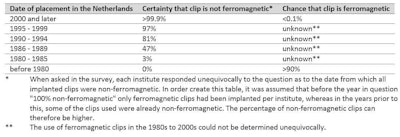 How to determine whether or not a cerebral aneurysm clip is ferromagnetic when the hospital of implantation is unknown in the Netherlands. Tables courtesy of Dr. Mark B.M. Hofman and colleagues and ISMRM.
How to determine whether or not a cerebral aneurysm clip is ferromagnetic when the hospital of implantation is unknown in the Netherlands. Tables courtesy of Dr. Mark B.M. Hofman and colleagues and ISMRM.Risks assessment for the clips was performed based on the standard risks for metallic implants in the MRI. The risk of displacement and rotation of the implant due to the presence of the static magnetic field and the spatial gradient of this field is the main risk for ferromagnetic clips. For nonferromagnetic models, the risk is negligible.
 Probability that an unknown type of cerebral aneurysm clip is not safe for MRI, as estimated by the Dutch working group.
Probability that an unknown type of cerebral aneurysm clip is not safe for MRI, as estimated by the Dutch working group.For an unknown type of clip, the working group estimated the risk and came to the following conclusions:
- The risk of implant heating due to interaction with the radiofrequency field is expected to be less than 1°.
- Risk of vibration or induction of currents by the oscillating magnetic field gradients applied for the spatial encoding of the MRI signal: due to the size of the implant, this is negligible.
- Artifact in the MRI image: for ferromagnetic clips up to 4 cm, otherwise typically < 1 cm.
- Risk of forces due to the Lenz effect during rapid movement of conductive implants in the static magnetic field of the MRI scanner: due to the size of the implant, this is negligible.
- Risk of implant disruption: the only significant risk of disruption is in the displacement and rotation of the clip.
The plan is to revise the Dutch guideline in another five years, or earlier if necessary.




